The Lyon Housemuseum
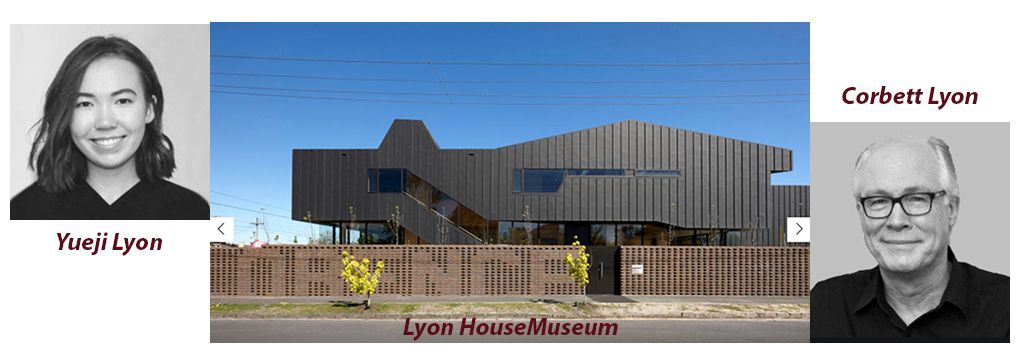
Corbett Lyon is a well-known Australian architect – in fact a 4th generation architect – art patron and leading collector of Australian Contemporary Art. Since 1990 he has developed the Lyon Collection with his wife Yueji, which is housed in the Lyon Housemuseum – a contemporary building, on a main thoroughfare in Kew, a residential area in Melbourne.
Immediately it is apparent that there is an incredible attention to detail – even the street address (Cotham Road) is impregnated into the design of the fence.
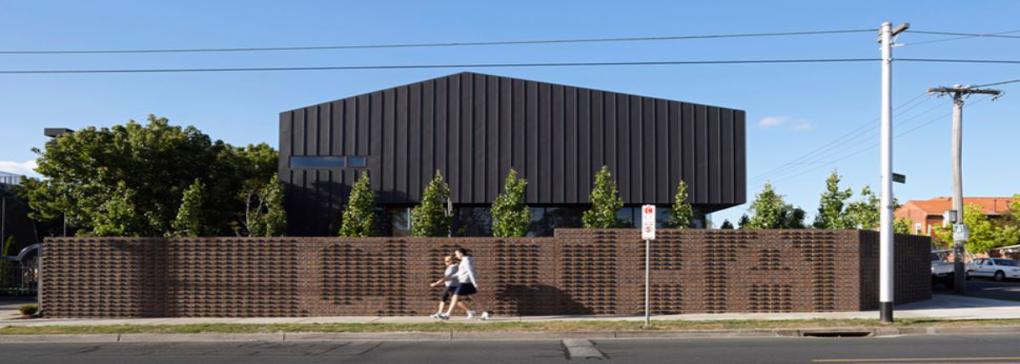
As the name suggests, Housemuseum, a name coined by Corbett Lyon, is a building, which was designed by him as their home and allows some of their +/- 350 art works, to be displayed for public viewing.
The idea for the original Housemuseum began brewing in Corbett's mind back in 1980, when he visited the 18th-century Venetian palazzo of American heiress Peggy Guggenheim. That home was inhabited not only by Peggy and her beloved pooches (all buried in the garden) but also by her outstanding collection of modern art. Peggy opened her home to the public three afternoons a week, during the summer months, for 28 years until her death in 1979. Corbett visited the palazzo soon after she died, when her furniture and belongings were still in place, the building yet to be stripped of its domestic intimacy and transformed into the more conventional public museum it is today. The home – and Peggy's gesture – left a lasting impression.
"She was incredibly generous, which is what I liked about her, and, most importantly, she left something that we all enjoy to this day," Corbett says. "We're not trying to replicate what she's done here, but it's certainly the sense of what she did, which is different to a lot of private museums and house museums which we've seen in Europe and the US, which are more like mini-institutional museums." (smh.com.au)
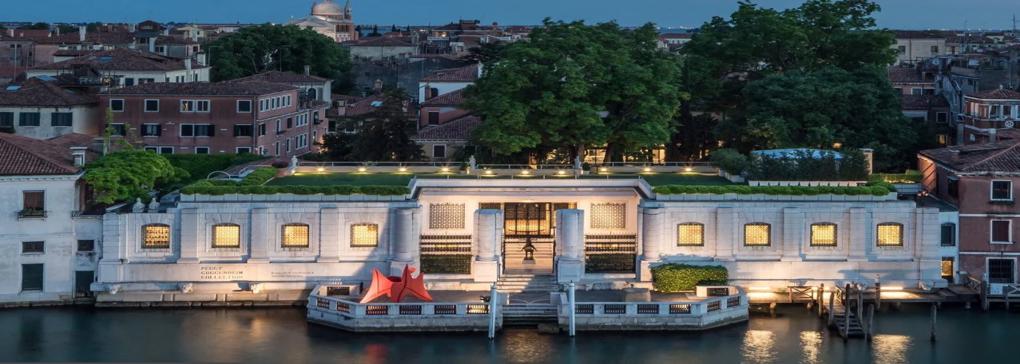
Corbett and Yueji Lyon open their home on selected days each month to showcase the artworks in a warm and relaxed environment.
As the Visitor Guide explains the Housemuseum challenges and engages visitors with new ideas about public and private space, looks at the relationship between art and architecture and explores new ways of displaying and experiencing.
Upon entering the light-filled hallway with its majestic staircase we knew we were in for a real treat - as Corbett welcomed us into his home. The timber throughout is Tasmanian oak; the ceiling and some of the walls filled with text (as shown below) – Corbett explains was written by the family (which includes their 2 daughters) as a family history – then the words and phrases were jumbled before being printed on the timber panels.
As we move to the formal sitting room we pass an art work featuring the grid-like streets of New York city – dominated by Central park (also shown below).
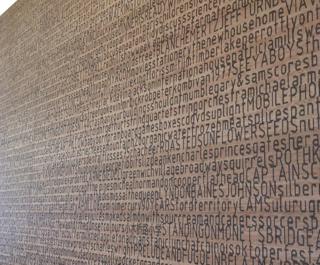
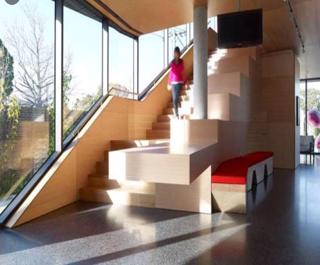
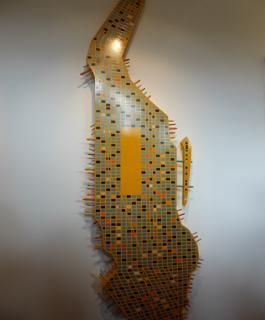
This room is elegant and understated framed by the garden and various art works. One being a typical Australian scene – playing cricket in the backyard.
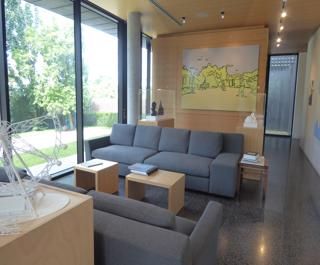
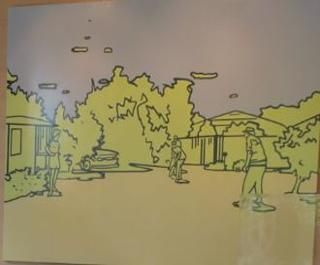
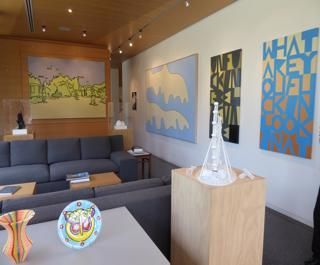
Corbett reveals that the timber panel opens up to display a series of watercolours – road signs situated along the Hume Highway between Sydney and Melbourne – however the words are removed. A similar set is displayed in the adjoining gallery (more on that later) and shown below.
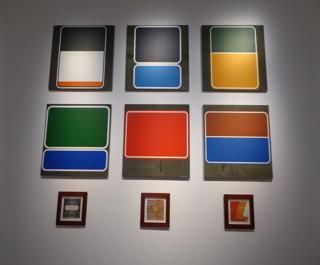
The study, open to students and researchers, is tucked away in a corner with a marvellous view of the garden. The table is 5 sided - and like all the chairs in the house - designed by Corbett Lyon.
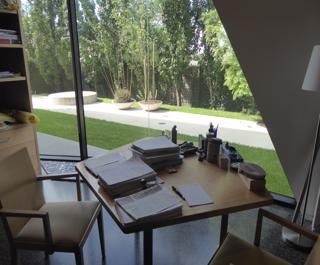
Along a corridor we come across some images of Corbett Lyon's projects along with Patricia Piccinini’s The Carrier– the collection’s most recent acquisition (refer below). First shown in in London in 2013 and subsequently exhibited at the National Gallery of Victoria’s summer exhibition Melbourne Now in 2014; The Carrier was commissioned by the Lyons in 2012 – realistic with human-like skin and Corbett tells us the artist inserted each hair individually – a painstaking task.
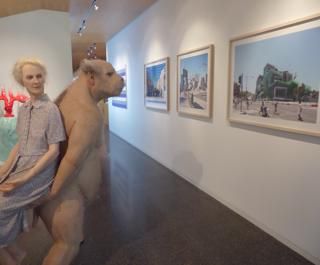
Then we enter a white cube – the full height of the 2-storey building exhibiting a large scale sculpture and several paintings. The full grandeur appreciated once we ascended the stairs to the second level – through the oblong windows, we could see the You Yang ranges in the distance, a glimpse of the bedrooms and art works displayed in surrounding rooms and corridors.
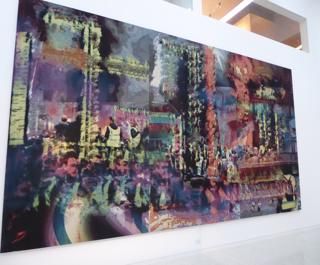
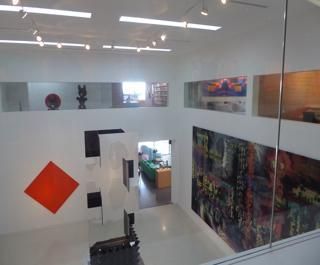
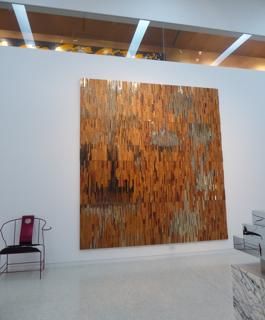
Corbett explains the house has 2 wings and both feature a cube – later we visit the black cube, suitable for video installations and the family’s home theatre. In the second wing we are invited to take a seat in a small concert hall where the organ takes pride of place. How wonderful to live in such a home and Corbett, as a keen organist, thrills us with a few short pieces.
The organ was designed with components manufactured in Italy and Australia. The custom designed instrument ranks of real pipes with the digital recordings of actual pipe sounds from the great cathedral organs or Europe.
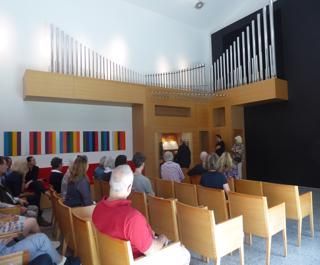
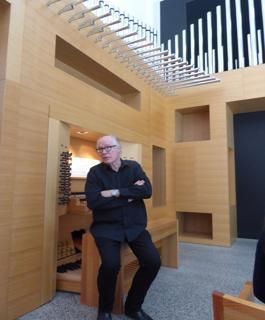
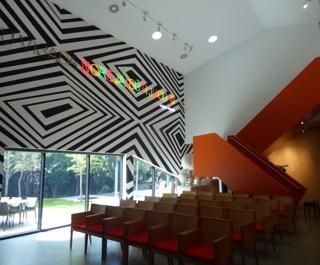
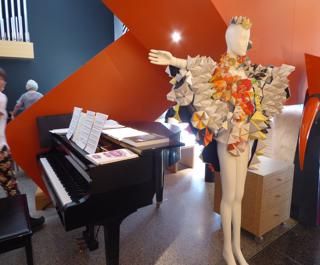
The family room and kitchen face the garden. Two big-ticket items are parked right next to the sofa - they look like cute, oversized toy trucks, one pink and one blue, with fat, human-like bottoms. These are the Truck Babies that were shown at Patricia Piccinini's first solo exhibition in 1999 at Tolarno Galleries.
Considered pretty out-there at the time, the trucks cost $15,000 each, small change these days for a major work from Piccinini's studio. (smh.com.au)
My favourite though is the panel that opens out to reveal the ultimate shadow box – filled with treasured mementoes collected by the Lyon’s 2 daughters.
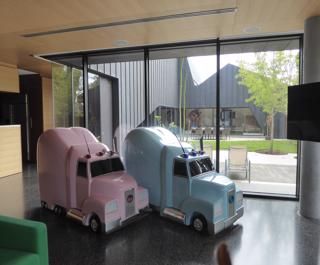
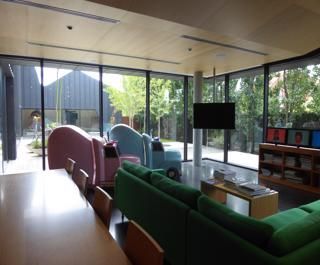
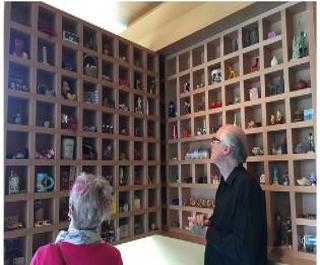
The wow moments continue as we explore the second level. The formal dining room, purpose built to permanently exhibit Howard Arkley’s Fabricated Rooms, 1997-98. This was the major work featured in Arkley’s solo exhibition in the Australian pavilion at the 1999 Venice Art Biennale. It was the largest work created by the artist and is displayed in the same U shape as in the exhibition.
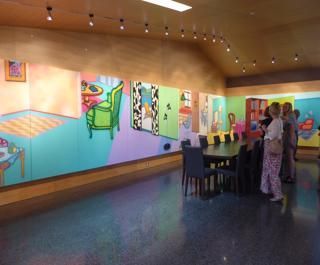
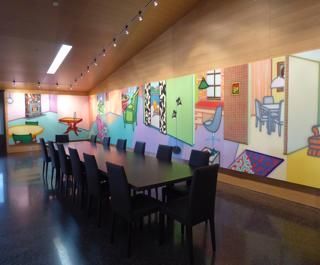
The upper level houses a selection of gallery spaces and the family library, the centrepiece, Kaleidoscope House, 2001, a modern dolls house, acquired from the permanent collection of the Museum of Modern Art, New York, for their young daughters, in 2005.
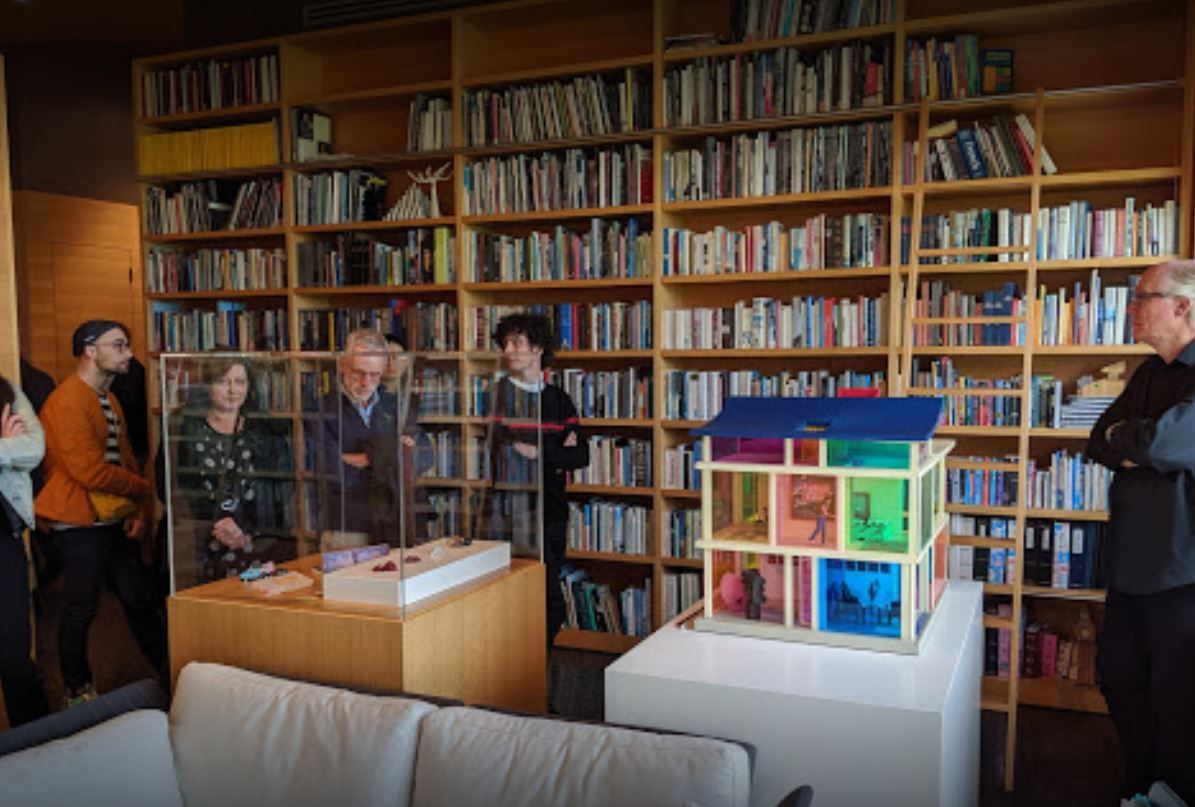
It was a pleasure and an honour to meander through a splendid private home, which doubles as a stunning gallery, viewing an amazing collection of works by Australian born artists who have established their principal practices in Australia.
Corbett Lyon’s enthusiasm is contagious as he explained why certain artists and pieces were selected for their collection. He shared some fascinating insights into the artists and his thoughts on the collection – you will have to visit to hear of them yourselves!
As I alluded to earlier there is also a public gallery right next door – also designed by Corbett Lyon, which features works by the same artists. Tomorrow we will take a look at one of these artists: Howard Arkley.
All photos are my own unless otherwise stated.
Text taken from the guided tour and The Lyon Housemuseum and Lyon Collection Visitor Guide.
